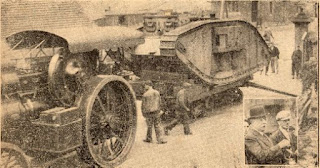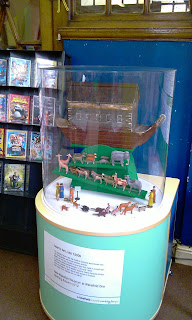The preparations for moving the museum collections are already well advanced. Museum staff are listing and checking objects as they are packed. Objects have to be packed carefully. Medical or cotton gloves are used to handle the objects so that they are not damaged by grease from hands, and they are packed in acid free tissue to protect against dirt and chemicals. Then outer layers of packing protect against vibration when the boxes are moved.
It's not a quick job!
 |
| Packing the prehistory displays - carefully sorting and packing archaeological remains. From left to right - Dave Evans (Curator), Pam Judkins (Collections Manager), Mary Macqueen (Conservator) |
 |
| Leanne Dodds (Registrar) and John Whitaker (Curator) remove a Victorian sewing machine from display |
We would love your comments and memories of visiting the museum on Wood Street? Did you have a favourite object?










